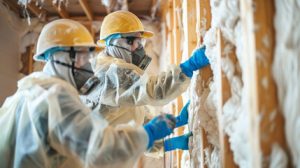No matter how carefully you use your driveway, annual freeze-thaw cycles and the weight of vehicles will take their toll. Proper maintenance, such as small repairs and resealing can prevent extensive damage that requires expensive replacement.

Often, cold patch products and basic sealants are adequate for minor driveway repair issues. But when extensive damage exists, hiring Driveway Repair Nashville is the best option.
A crack in your driveway isn’t just unsightly — it can indicate a structural problem. Fortunately, early concrete repairs prevent bigger issues and minimize damage to your vehicle or property.
Cracks in your driveway are caused by a number of factors, including temperature changes, soil movement, heavy loads, improper installation, and tree roots. The best way to avoid these issues is to ensure that your driveway was properly installed, with a high-quality, well-compacted base. Additionally, you can help prevent the onset of cracks by regularly sealing your driveway.
Small cracks can be filled with a rubberized asphalt-emulsion crack filler, which is available at most home improvement stores. However, if the cracks are wider than 2” or if they’re causing the surface to deform, you’ll need to have it repaired by a professional.
Sinking areas are a sign of shifting soil beneath your driveway, and can occur due to water erosion, improper drainage, or underground voids. The good news is that these problems are preventable by ensuring proper site preparation before pouring concrete, and by improving drainage and installing gutters to help direct water away from the driveway’s surface. If you notice that your driveway has sunk, professional slab jacking (also called foam jacking) can lift and stabilize it.
In addition, removing or limiting root intrusion and implementing a maintenance program that manages the sod and weeds surrounding your driveway can prevent soil movements that contribute to the development of cracks. Lastly, regular inspections of your driveway can help catch any small issues before they escalate into more extensive and costly repair work. With these measures, you can maintain the strength and beauty of your concrete driveway for years to come.
Potholes
Over time, heavy vehicles and severe weather can cause a breakdown in asphalt, which creates craters that are known as potholes. These can pose a threat to vehicles and cause damage to the driveway itself. The best way to prevent these issues is by properly maintaining your driveway and performing regular inspections.
Identifying potholes is the first step in the process of repairing them. Look for signs such as depressions or loose gravel surrounding the area to determine if it requires immediate attention. By promptly addressing any deterioration, you can avoid the need for costly professional repair.
Before attempting to fill a pothole, you should make sure to clean the area thoroughly. This will remove any dirt that could get mixed in with the new asphalt, which can weaken it over time. In addition, you should heat the hole to soften any existing pavement and reshape it as needed.
Once you have completed the initial steps, you can begin to fill in the pothole with your chosen material. Be sure to use a tamper or the back of a shovel to compact the asphalt, which will ensure that it holds firm and isn’t easily displaced by traffic.
In some cases, you may be able to use bagged asphalt for your pothole repairs. This is a cost-effective option that can be done with minimal equipment, though you will need to follow the instructions carefully. You should also remember that this is only a temporary solution, and you will need to replace the damaged asphalt in the future.
Structural Issues
The longevity of your driveway depends on its structural integrity. Keeping it in good condition prevents water damage, protects your vehicle, and extends your property’s value. If you notice cracks, crumbling, or extensive surface deformations, it’s time to call in a professional for a repair.
Minor surface deterioration and cracks can be repaired with DIY solutions such as concrete-specific caulk and crack filler. For more serious problems, however, a concrete expert is required to address underlying issues and ensure long-term durability.
When a crack extends to the base layer or shows signs of movement, it’s a sign that the structural system is failing. This often results from water infiltration, freeze-thaw cycles, poor soil compaction, or subpar concrete quality. In most cases, surface patching is insufficient and a full structural evaluation is needed to determine whether resurfacing or replacement is the best option.
Surface heaving or settlement are other common signs of structural failure. These conditions develop when the ground shifts beneath your driveway, which can lead to a loss of structural integrity and costly repairs. Drainage issues are another leading cause of foundational movement, as water that pools on the surface or fails to drain away from the driveway rapidly infiltrates and weakens the material.
Taking action early on can prevent these serious issues from escalating, minimizing the cost of repairing and replacing your driveway. If you notice cracks, potholes, or significant sinking, contact a local concrete specialist for an inspection and estimate. They can provide you with an informed assessment and comprehensive repair plan that aligns with your budget and long-term goals. If the damage is severe, a professional may recommend slab lifting with polyurethane foam (polyjacking) or mudjacking for more comprehensive structural fixes.
Resurfacing
When you see cracks forming across your driveway, it’s often time to consider resurfacing. It’s an economical solution that can help extend the lifespan of your existing driveway. It’s also typically suitable for early-stage surface cracks that don’t reach deeper slabs. However, it’s not ideal for tripping hazards or severe cracks that may have reached the foundation.
A resurfacing job is typically done using concrete repair material like NewCrete mixed and spread evenly over your driveway surface to create a smooth, even top layer. It fills in minor cracks and chips while also providing a durable, weather-resistant finish. A professional can add textures or designs to the topcoat to add visual appeal or functionality.
It’s important to note that resurfacing is not a permanent fix for your driveway. Unlike a replacement, it doesn’t address underlying problems such as structural damage or drainage issues. Additionally, resurfacing can be a challenge for concrete that has significant and growing cracks because the resurfacer may not bond with the underlying slab.
Standing water on your driveway can cause major structural damage and tripping hazards. It’s a sign of poor drainage and can indicate the presence of a sinkhole. In some cases, it can be corrected by regrading or adding a drainage system. Other times, resurfacing can be used to level low areas of your driveway.
Replacement
When the damage to your driveway is extensive and structural integrity is compromised, replacement becomes the best option. New construction resets the lifespan of your driveway, offering up to two decades of low-maintenance use. Driveway replacement is also a great time to consider other options that might enhance your property, such as trading steps for a ramp or a swapping standard brushed concrete for a stamped design.
Cracks are one of the most common signs that your driveway needs repair. If they’re left untreated, water can seep into the cracks and cause more serious problems later on. To fix them, clean the cracks of debris and dirt. Then, choose a high-quality crack filler designed for asphalt or concrete. It can be purchased in liquid or tube form and is easy to apply. Once the cracks are filled, a smooth coat of sealant should be applied. The sealant will protect the repair and add color to the driveway, as well.
Another sign that your driveway is ready for repair is crumbling edges. These are usually caused by infiltrated water and should be repaired promptly to avoid additional damage to the driveway structure. Crumbling edges can also indicate that the underlying surface is too thin to withstand the weight of your vehicles and other loads.
A professional contractor will evaluate your existing driveway to determine the extent of the damage and the best course of action for a long-lasting solution. A quality contractor will also look into what caused the damage in the first place to ensure it doesn’t happen again, saving you money and hassle in the future.

